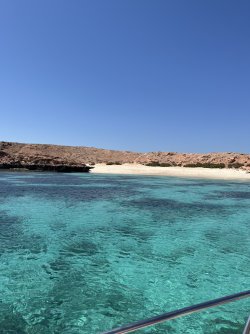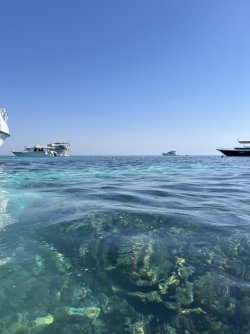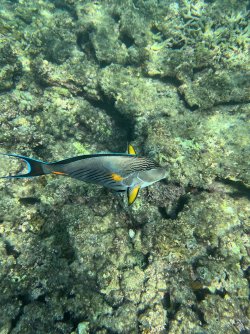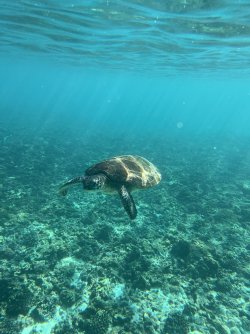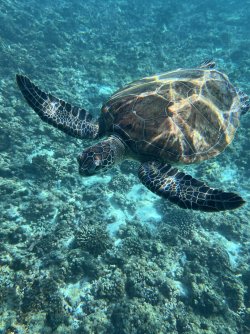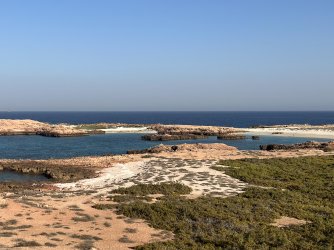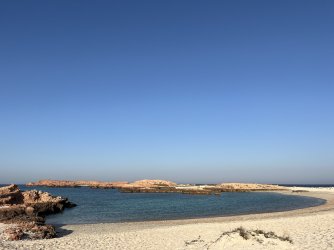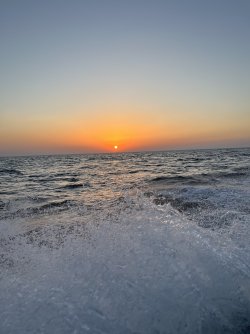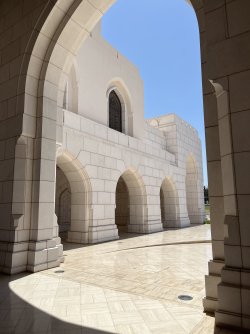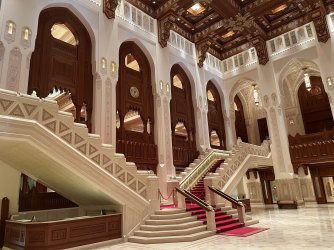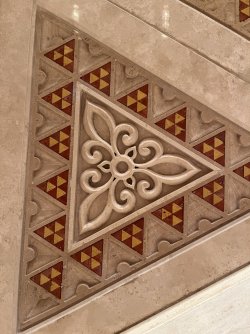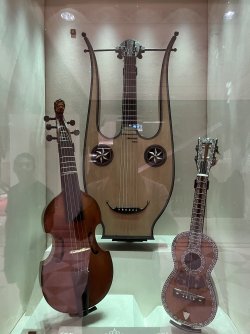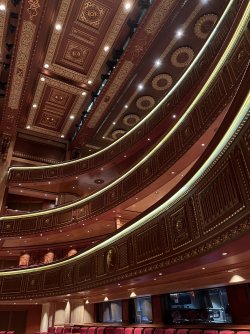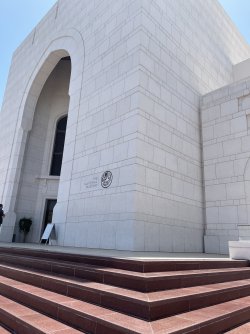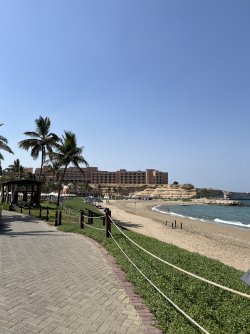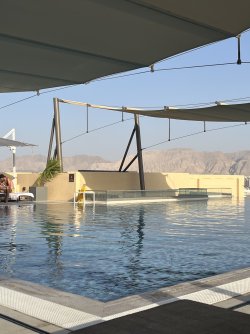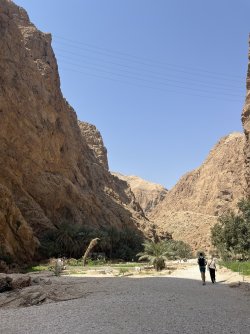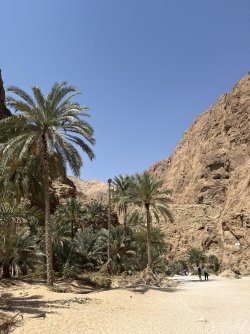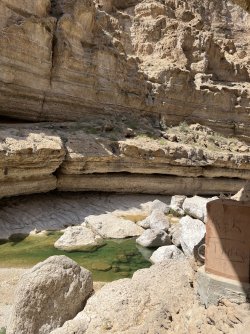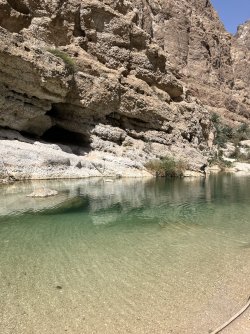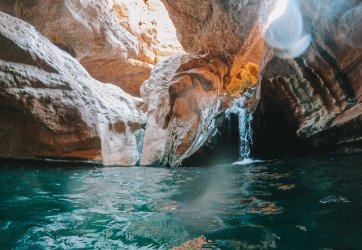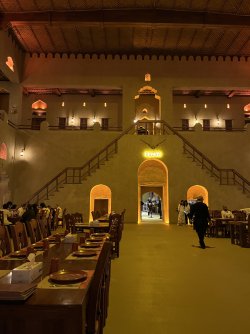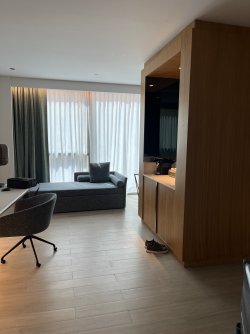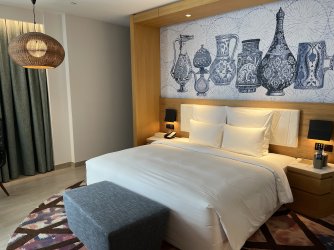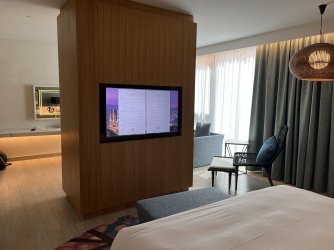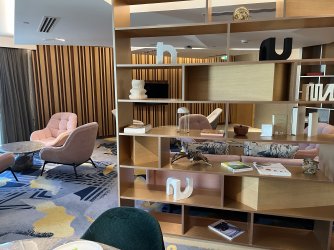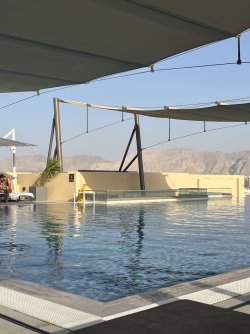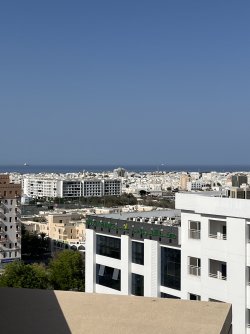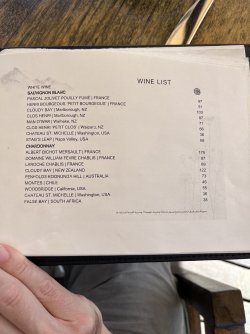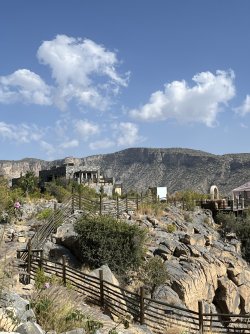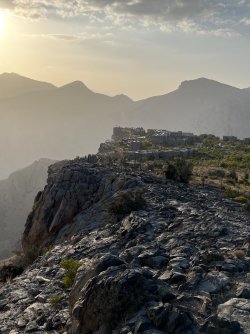Nizwa and Surrounds (Nizwa Fort, Jabreen Castle, Al Hoota Cave, Bahla Fort)
After leaving Alila Jebel Akhdar we made our way back down the mountain towards the inland city and former capital of Nizwa. Along the way we made a brief detour to visit an abandoned mountain village by the name of Wadi Bani Habib. Oman seems to have a plethora of historical mud brick villages that have been abandoned and reman in varying states of dilapidation. It was a fairly steep descent from the carpark to a dry creek bad and then on to the village. Visitors are free to roam around the remains of old houses. Some still have upper stories intact as well, which provided some lovely outlooks into the tops of the walnut, palm and pomegranate trees growing in the village.
 Spot the remains of houses
Spot the remains of houses
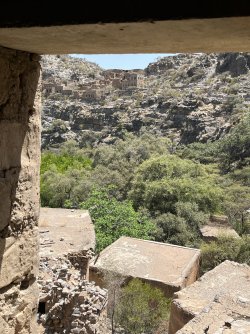
View from a second storey window which caught a beautiful cool breeze on a hot day
Once we reached Nizwa we found our way to our small, fairly basic hotel “House 76” in the old town. Nizwa has a couple of modern but bland looking 4 star properties on the outskirts and then quite a number of inns and guest houses in the old town which is in the middle of a renaissance. Most of those inns have tiny, dingy looking rooms. House 76 on the other hand offered a 2 bedroom apartment for less than many of the inns. It was nondescript but perfectly located right behind Nizwa Fort and a stone’s throw from the souq.
We spent our first afternoon getting lost in the laneways of the old town. It’s a jumble of totally uninhabitable, collapsed old mud brick buildings and newly restored/gentrified/constructed premises catering mostly to tourists: cafes, inns, bakeries, ice cream shops, etc. It was actually really charming. I’d say that it’s only a year or two away from peak gentrification, but even then it will be a lovely district.
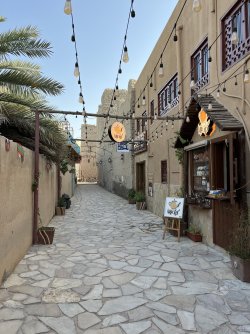 The aroma of Omani milk tea "Karak" from this hole in the wall filled the whole laneway. Karak is a tiny bit like masala chai, but sweeter and fewer spices added to the brew.
The aroma of Omani milk tea "Karak" from this hole in the wall filled the whole laneway. Karak is a tiny bit like masala chai, but sweeter and fewer spices added to the brew.
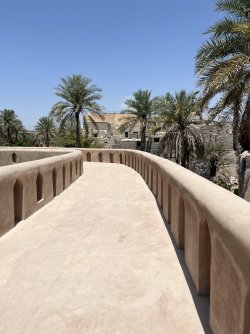
Newly restored walls within the old town. We never quite worked out which side was inside the walls and which was outside. The wall seemed to meander through the centre of the old town. Unfortunately explanatory signage was kind of lacking.
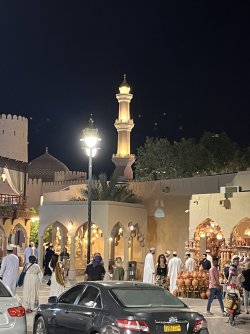
Souq area at night
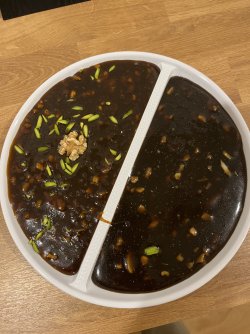
Delicious Omani dessert: Halwa. Basically made from cornflour, water and caramelised sugar with added nuts, cardamon, saffron and/or honey for different flavours
That night we drove 10 minutes out into the newer part of the city for exceptionally good Italian at a place called Olio, then returned for an early night.
The next day turned into a bit of a rest day. Temperatures outside were pushing towards 40ºC and energy levels were a bit low, so we din’t feel guilty for staying put, doing some laundry, popping out for coffee and not doing much else until heading over to Nizwa Fort later in the afternoon. The site is large, impressive and full of coughy traps and clever and cruel ways of foiling enemy attacks such as narrow slits above many entrances where boiling date syrup or oil could be poured down to dissuade unwelcome visitors. Having survived that, the unwitting visitor (or JW door knocker maybe…) might then step on a trapdoor leading to a tumble straight into one of many dungeon cells.
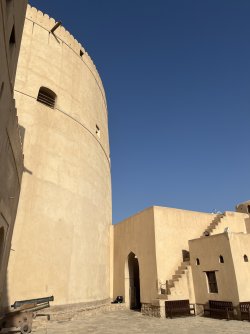

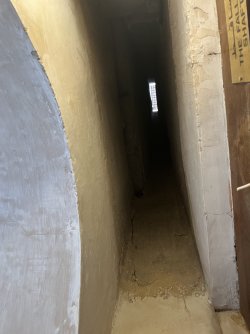 Boiling hot date syrup channel from above!
Boiling hot date syrup channel from above!
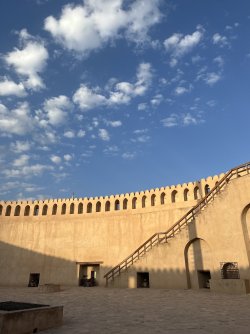
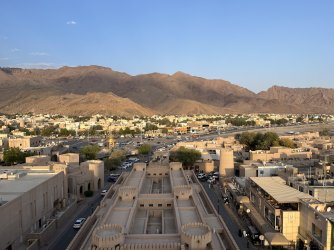 View from the fort tower
View from the fort tower
The next day we hopped back in the car and drove about 30km out of town to visit Jabreen Castle.
Wow.
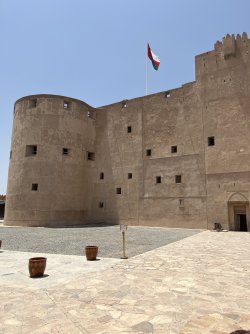 The outside may not look like much...
The outside may not look like much...

One of dozens of rooms
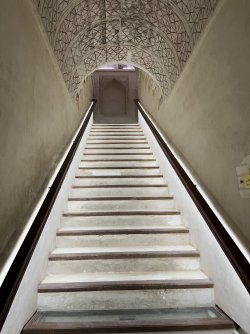
Inspiration for A380 stairs maybe?
This castle dating back to the late 1600s has been beautifully and sensitively restored. It was utterly labyrinthine and beautiful at every turn. Some of the rooms had rugs, furniture and ornaments on display which added to the ambiance. We kept remarking to each other that it is the sort of old castle that would make an amazing small luxury hotel…and also it’s a good thing that it hasn’t been coughised in that manner.
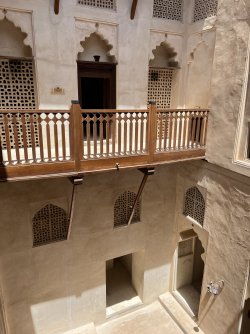
One of the lovely internal courtyards.
Another highlight of Jabreen Castle was this baklava cheese cake in the onsite cafe. It combined two of my favourite desserts into one heavenly, decadent treat!
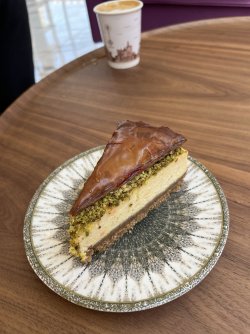
Slight change of plans after Jabreen. We had planned to go to the nearby Bahla Fort. But again the heat was getting intense, so we switched the order of proceedings and went to Al Hoota Cave for the afternoon. I spent a lot of time as a teenager at Jenolan Caves west of the Blue Mountains and in fact started training at one point to become a casual tour guide at Jenolan, so I have a long held affection for limestone caves and have visited many around the world. Al Hoota Cave was apparently only discovered relatively recently in the 1960s. Approximately 500m of the 5km cave system has been opened up as a show cave. Visitors can follow the path through the show caves with or without a guide. At the time we arrived it would have been almost an hour wait for the next guided tour, so we opted to forego the guide.
First, there’s a golf buggy ride from the ticket office and small museum to the cave entrance. On busier days they run a little 2 carriage train on tyres for the 800m or so to the cave entrance. Metal pathways and lighting inside the cave were modern and very well maintained. For the most part, visitors follow a clockwise loop around a single large, long cavern, with a bit of a branch off towards the end and an optional flight of stairs down to the edge of a vast underground lake. The cavern isn’t as elaborately decorated as some other cave systems around the world, but there’s still plenty of pretty speleothems to go ooh ahh over.
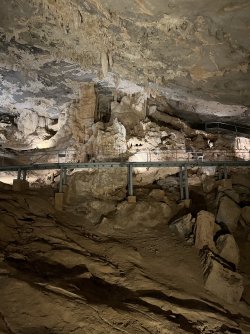
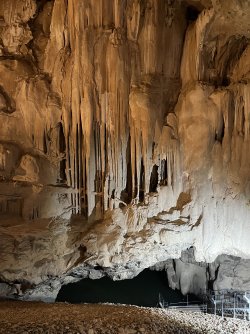
On our final morning in Nizwa we unfortunately got up too late to make it to the famed Friday morning goat market adjacent to the souq. We got there a bit after 8:30 and all that remained was a rather forlorn looking cow on the back of a ute and a tethered goat that mustn’t have been sold. We grabbed breakfast, checked out of our flat and drove to Bahla Fort which was directly on our route to our stop for the next two nights: Jebel Shams.
As luck would have it, we visited Bahla Fort on World Heritage day. The fort was added to the UNESCO list in 1987, so entry was free. The region had its heyday from the 12th to 16th centuries and the massive fort was progressively expanded during that time. Sadly there is virtually no interpretive signage inside the complex so I don’t know much more about it!
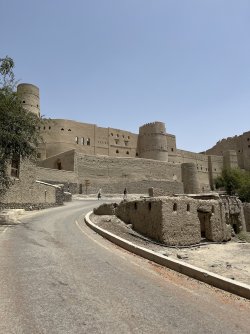
One highlight was that a couple of rooms of an outbuilding had been turned into a small art gallery exciting works of a local Omani woman artist. Her paintings were almost all of women and rich in symbolism of independence, obligation, dreams, expression, freedom and forbidden love. I was very very tempted to buy a particularly evocative painting, but the asking price was just a bit too much. Instead I got a much smaller print of said painting on canvas for AUD20.
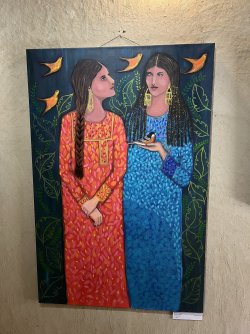
Interspersed with visiting various sites and landmarks was more strolling around the old town, browsing the souq, visiting a few different cafes, rambling on the ramparts and taking in the relaxed vibe of Nizwa and the beauty of the place. When planning the itinerary for this trip, I wondered if 3 nights might be a bit too long to spend in Nizwa. I honestly think there’s enough in the region to use Nizwa for a base for a week and still not get bored.
